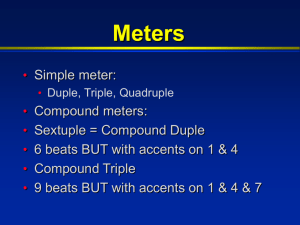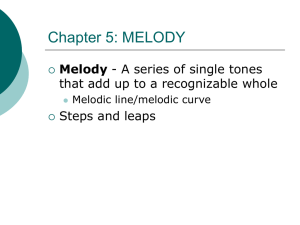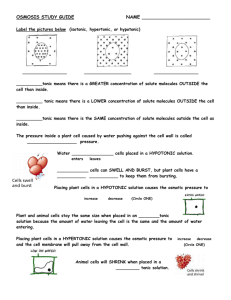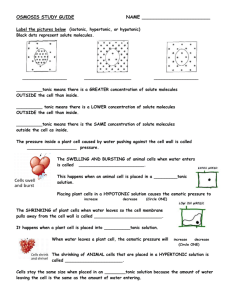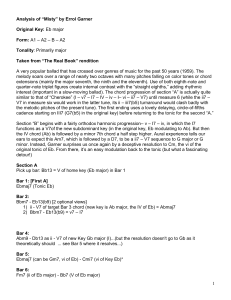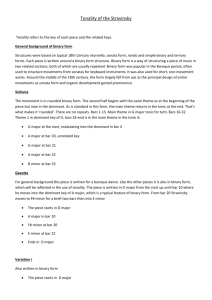Chapter 3 The Structures of Music Tonality and
advertisement
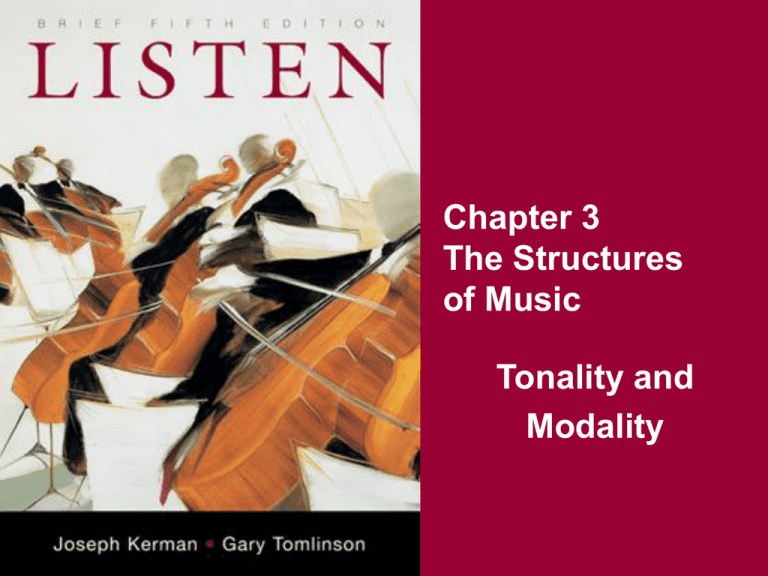
Chapter 3 The Structures of Music Tonality and Modality Key Terms Tonality Tonal music Tonic Modality Modes Major mode Minor mode Chromatic scale Keys Modulation Tonality Musical center of gravity Feeling of a “home” pitch around which other notes are arranged A nearly universal phenomenon, found in music around the world Atonality = the absence of tonality • Creates a wandering, unsettled quality • Used in some more contemporary styles Tonality Tonic pitch: • • • • • “Home” pitch First note of a scale do in the do re mi fa sol la ti do scale The most stable, fundamental pitch of a scale The “at rest” note on which tonal melodies nearly always end In relation to tonic, other note of a scale may sound: • Close or remote, dissonant or consonant, or as if they “lead” toward tonic Tonality Cadences and tonality Composers can create tension by moving away from tonic; resolution by returning In the strongest cadences (authentic): • Melody ends on tonic • Accompanying chord progression ends on the tonic chord In weaker cadences (half): • Melody ends on other scale steps, often scale step 2 • Chord progression ends on some other chord, often the one built on scale step 5 Modality Major and minor scales Many musical traditions use multiple scales, more than a hundred in some countries Most Western music uses only two scale types: major mode and minor mode do re mi fa sol la ti do is a major scale Minor scale uses same pitches, but with la as tonic, not do Modality Major vs. Minor Major and minor scales use different patterns of whole steps and half steps • • • • Major scale begins with two half steps Minor scale begins with a whole step and a half step Major scale ends with a half step Minor scale ends with a whole step Scale steps 3, 6, and 7 are a half step lower in minor mode Major scales tend to sound brighter Minor scales tend to sound darker (sadder?) Major vs. Minor Major vs. Minor Keys Major or minor scales can begin on any note on the keyboard • Every key is named for its tonic pitch • Thus we can have the key of F Major (major scale beginning on F) or the key of C-sharp minor (minor scale beginning on C-sharp) Scales in any key must follow these rules: • Every letter name must be used once • The correct pattern of whole steps and half steps must be observed Sharps or flats are used to adjust scale steps Keys Since there are twelve notes in the chromatic scale, it is possible to construct twelve major keys and twelve minor keys Modulation Major and minor keys create a strong pull toward tonic Composers can disrupt that pull by modulating, changing to a different key Modulation not only changes to a new key, it creates a new tonal center! Modulation can be used to create: • Mystery, excitement, disorientation, variety, and so on Tonality Listening Things to listen for: Tonality or atonality? Authentic cadence or half cadence? Major or minor mode? Does it modulate?
